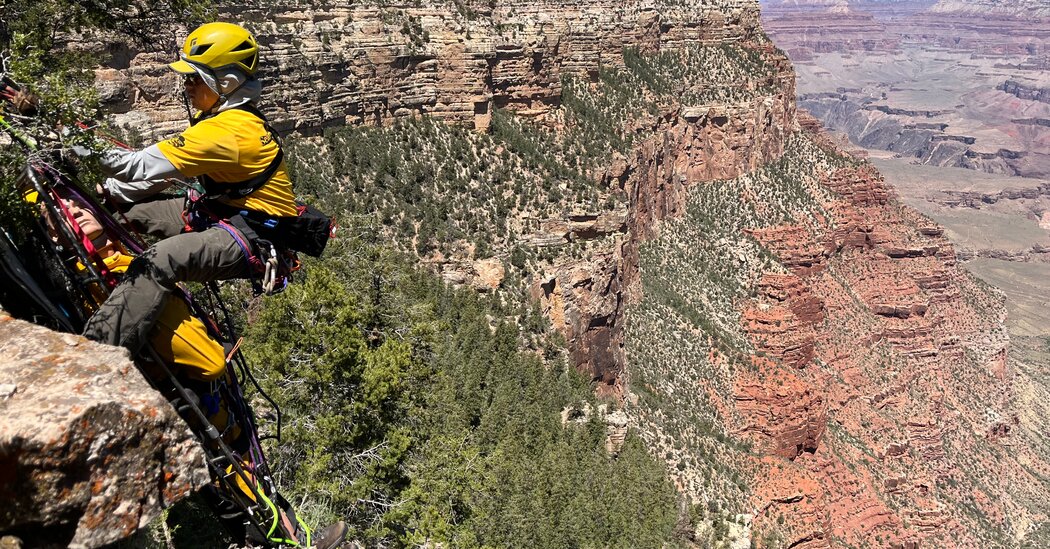Watching weary day hikes start the long uphill hike from Phantom Ranch, a ranger station at the bottom of the Grand Canyon, Jeff Schwartz has learned to look for telltale warning signs.
“They’ve got the salt stains all over their shirt, and clearly have a day pack on, and you’re like, ‘let’s prevent some search and rescue by talking with these folks,’” said Mr. Schwartz, a paramedic and backcountry park ranger who has worked at Grand Canyon National Park since 2012. After a dozen summers on the trail, he also knows what to offer: a comfortable seat in the shade of the ranger’s office, maybe something salty to eat. “It’s amazing what a bowl of ramen noodle soup will do,” he said.
An unplanned overnight at the Ranch may be in order for those in truly dire straits. For everyone else, the ramen is a reset, a dish served with a frank discussion about how long and how hard it might be to get back to the rim.
It’s been a deadly summer for hikers in the Southwest. At least seven have died in recent weeks from apparent heat-related causes — including one at the Grand Canyon, one in Death Valley and two at a state park in Nevada — as extreme temperatures this year have met increased visitation at national and state parks.
Grand Canyon National Park has long been one of the National Park Service’s most visited marquee destinations, even before the pandemic sparked a surge of interest in the great outdoors. Carved like a giant boot print into the northern half of Arizona, the park stretches across a million acres of rugged high desert, with a year-round community — Supai, the home of the Havasupai Nation, occupies a slender valley along the Colorado River — and some five million annual visitors who are drawn by hiking, white-water rafting and unparalleled views.
But during the summer, the park is already at the edge of comfort for the human body. And unlike Death Valley National Park, where visitation peaks in the winter months, the Grand Canyon typically sees both its highest temperatures and peak visitation in June.
The park’s search-and-rescue staff are among the busiest in the entire park system, with an average of more than 300 incidents a year and tens of thousands of “visitor contacts” meant to head off even more emergencies. But while search-and-rescue incidents across the National Park system have ticked upward alongside rising visitation in recent years — a post-pandemic rebound in annual visits this year is climbing…
Click Here to Read the Full Original Article at NYT > Travel…
